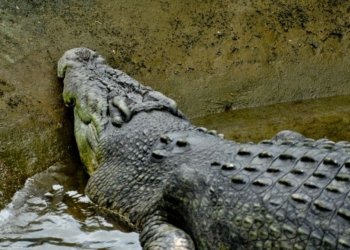If you are a proud owner of a Labrador retriever, you might be wondering how much your furry friend will grow and how to keep track of its development. Labradors are one of the most popular dog breeds in the world, and they come in a variety of sizes, colors and types. In this article, we will answer these questions and more, using a Labrador weight chart and some helpful tips.
A Labrador weight chart is a tool that can help you estimate the adult weight and height of your Lab based on its current age and weight. It can also help you monitor your Lab’s growth rate and compare it to the average for the breed. A Labrador weight chart can be useful for several reasons, such as:
- To make sure your Lab is healthy and not underweight or overweight
- To adjust your Lab’s diet and exercise according to its needs
- To plan for your Lab’s equipment, such as crates, beds, collars and harnesses
- To satisfy your curiosity and have fun with your Lab
However, a Labrador weight chart is not a definitive guide, and it does not take into account other factors that may affect your Lab’s growth, such as genetics, health conditions, spaying or neutering, and individual variations. Therefore, you should always consult your veterinarian if you have any concerns about your Lab’s weight or development.
How to Use a Labrador Weight Chart?
To use a Labrador weight chart, you need to know two things: your Lab’s age and weight. You can find your Lab’s age in weeks or months on the bottom of the chart, and its weight in pounds or kilograms on the left side of the chart. Then, you can follow the dots on the chart to find the estimated adult weight of your Lab. For example, if your Lab is 16 weeks old and weighs 35 pounds, you can expect it to weigh around 70 pounds when fully grown.
However, keep in mind that a Labrador weight chart is based on averages, and there is a considerable range of weights for each age. For instance, a 16-week-old Lab can weigh anywhere from 25 to 45 pounds, depending on its type, gender, size and build. Therefore, you should not worry too much if your Lab is slightly above or below the average, as long as it is healthy and growing steadily.
Labrador Weight Chart
To help you keep track of your Lab’s growth and development, we have created a Labrador weight chart that you can use as a reference. The chart shows the average weight and height of Labradors at different ages, as well as the minimum and maximum ranges.
| Age | Average Weight (lbs) | Average Height (inches) | Weight Range (lbs) | Height Range (inches) |
|---|---|---|---|---|
| 8 wks | 15 | 12 | 10-20 | 10-14 |
| 12 wks | 25 | 15 | 15-35 | 12-18 |
| 16 wks | 35 | 17 | 25-45 | 14-20 |
| 20 wks | 45 | 19 | 35-55 | 16-22 |
| 6 mos | 55 | 21 | 45-65 | 18-24 |
| 9 mos | 65 | 22 | 55-75 | 20-24 |
| 12 mos | 70 | 23 | 60-80 | 21-24.5 |
| 18 mos | 75 | 23.5 | 65-85 | 22-24.5 |
| 24 mos | 80 | 24 | 70-90 | 22.5-24.5 |
Note: The chart is for general guidance only, and it does not reflect the exact weight and height of your Lab. Your Lab may be smaller or larger than the average, depending on its type, gender, genetics, diet, health, and other factors. Always consult your vet if you have any concerns about your Lab’s growth and development.

Labrador Growth Stages
Labradors go through four main growth stages: newborn, juvenile, adolescence and adulthood. Each stage has its characteristics and milestones, and it is important to understand them to provide the best care for your Lab.
Newborn Stage
This stage lasts from birth to 8 weeks of age, and it is the most critical and vulnerable period for your Lab. During this stage, your Lab will:
- Be born with its eyes and ears closed, and rely on its mother for warmth, food and stimulation
- Double its birth weight in the first week, and gain about 2 pounds per week until 8 weeks
- Open its eyes around 10 to 14 days, and start to see and hear
- Begin to walk around 3 weeks, and explore its surroundings
- Develop its teeth around 4 weeks, and start to eat solid food
- Learn social skills and behaviors from its mother and littermates, such as bite inhibition, communication and play
- Be ready to leave its mother and go to its new home at 8 weeks
Juvenile Stage
This stage lasts from 8 weeks to 6 months of age, and it is the most rapid and noticeable growth period for your Lab. During this stage, your Lab will:
- Grow very fast, and reach about 75% of its adult weight and height by 6 months
- Have a lot of energy and curiosity, and need plenty of exercise and mental stimulation
- Start to lose its puppy coat and grow its adult coat, which may change in color and texture
- Have its permanent teeth fully erupted by 6 months, and need to chew a lot to relieve the teething pain
- Go through a fear period around 4 months, and become more cautious of new things
- Learn basic obedience and manners, and need consistent training and socialization
- Experience hormonal changes around 6 months, and become more independent and rebellious
Adolescence Stage
This stage lasts from 6 months to 2 years of age, and it is the most challenging and frustrating stage for both you and your Lab. During this stage, your Lab will:
- Slow down its growth rate, and reach its adult weight and height by 12 to 18 months
- Have a strong drive to explore and test its limits, and need firm guidance and boundaries
- Develop its sexual maturity around 9 to 12 months, and show signs of interest in mating and marking
- Go through a second fear period around 12 to 18 months, and become more sensitive and insecure
- Have a lot of stamina and endurance, and need regular exercise and activity
- Develop its personality and temperament, and show its true character and traits
Adulthood Stage
This stage lasts from 2 years onwards, and it is the most stable and rewarding stage for you and your Lab. During this stage, your Lab will:
- Stop growing physically, and maintain its weight and height
- Calm down and mature mentally, and become more obedient and loyal
- Have a well-established routine and lifestyle, and enjoy its daily activities and companionship
- Have a strong bond and trust with you, and be your best friend and partner
Factors That Affect Labrador Growth
As you can see, Labradors have a wide range of growth rates and sizes, and there is no one-size-fits-all formula to predict their development. However, some factors can influence how your Lab grows, such as:
- Type: Labradors can be divided into two main types: English and American. English Labs are bred for show and conformation, and they tend to be heavier, stockier, and calmer. American Labs are bred for field and performance, and they tend to be lighter, leaner, and more energetic. Therefore, English Labs may grow faster and larger than American Labs, and reach their adult size sooner.
- Gender: Male Labradors are usually larger and heavier than female Labradors, and they may grow for a longer time. Male Labs can weigh up to 80 pounds, while female Labs can weigh up to 70 pounds.
- Genetics: Labradors inherit their genes from their parents, and their genes determine their potential size and growth rate. If both parents are large and fast-growing, their offspring are likely to be the same. If one parent is small and slow-growing, their offspring maybe somewhere in between.
- Diet: Labradors need a balanced and nutritious diet to support their growth and development. They need high-quality protein, fat, carbohydrates, vitamins, minerals, and water to provide them with energy, building blocks and essential nutrients. They also need the right amount of food, not too much or too little, to prevent obesity or malnutrition.
Conclusion
Labradors are wonderful dogs that can bring joy and happiness to your life. By using a Labrador weight chart and following some simple tips, you can help your Lab grow up healthy and happy, and enjoy its company for many years to come. If you found this article useful, please share it with your friends and family who own or love Labradors. Thank you for reading!



































